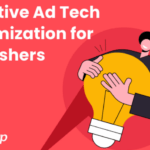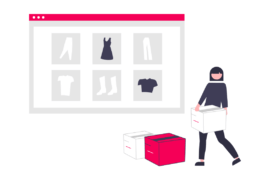Yes, the time is near – Third-party cookies are about to disappear very soon, and it is necessary to prepare early for the consequences. Let’s discuss the 7 Best Alternatives to Cookies (Third-Party).
This is all the more crucial after Google’s announcement that by the end of the year 2023, they would stop providing support for Third-party cookies on Chrome. As a result, website owners, as well as marketers, have started to look for alternatives.
- Research by IAB shows that there is a possibility of publishers losing up to about $10 billion in ad revenues if Third-Party cookies are done away with.
- Google also reports that if publishers do not adopt a new approach towards data from the users, they run the risk of losing about 50-70% of their revenue. (Source: Services.Google.com)
- Even 77% of marketers are of the opinion that Google’s decision to phase out Third-Party Cookies will definitely make the job of marketing more difficult for them.
But then, what is the solution?
What are the alternatives that can compensate for the absence of Third-Part Cookies? Let us go through the following points to better understand the situation and get an idea about how to deal with the situation.
- 7 Top Alternatives to Third-Party Cookies
- What is the Reason for Blocking Third-Party Cookies?
- What Will Happen When Third-Party Cookies are Blocked?
- What is The Reason for Blocking Third-Party Cookies
Also Read: What Are Cookies? Different Types of Web Cookies, Explained
7 Top Alternatives to Cookies (Third-Party)
As we have discussed already, the phasing out of Third-Party Cookies is already driving advertisers and marketers to look for alternatives, which would also be as effective. Now, although the number of alternatives available is quite high, one should be aware of which one suits their needs the best and why. Here are the top options for 2023:
First-Party Data – Best Alternative to Cookies (Third-Party)
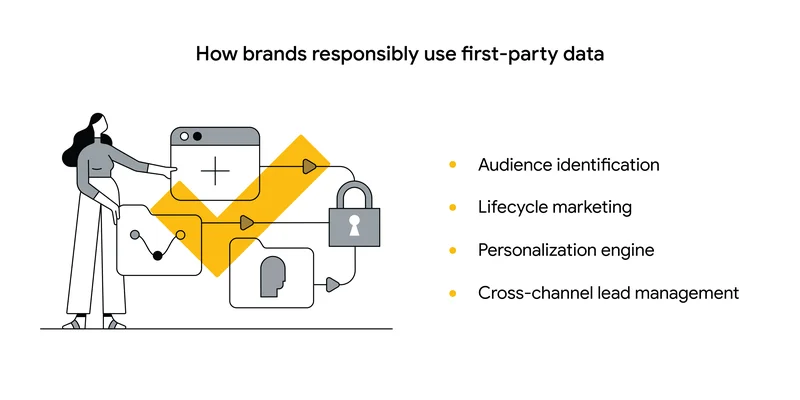
Just as the name suggests, First-Party Data is collected directly from the customers. But how do you do this, and what do you do with this data once you get it? The data may be collected from a number of sources, namely – landing pages, websites, surveys, SMS, email, CRM like Hubspot etc.
Most of the First-Party Data is collected primarily from simple site interactions only. But most of these will be basic data. For more detailed data collection from the users, what you can do is nurture your relationships with your contacts in a productive and trusting way so that they trust you with more of their personal information.
Now, if you do manage to get consent from users about collecting more advanced data, you can use progressive profiling strategies as leverage to get demographic, firmographic or other kinds of information.
According to a survey report by Statista, 37% of business managers from ad tech, marketing tech, and customer data strategies across the globe stated their brands used exclusively first-party data in 2022 to personalize customer experiences. Earlier, the shared stood at 31 per cent.
Once this First-Party Data is collected, it can be used to gain high-quality insights about the audience you have and go on to create a highly customized and personalized experience for them to gain their loyalty.
Google Topics API or Privacy Sandbox
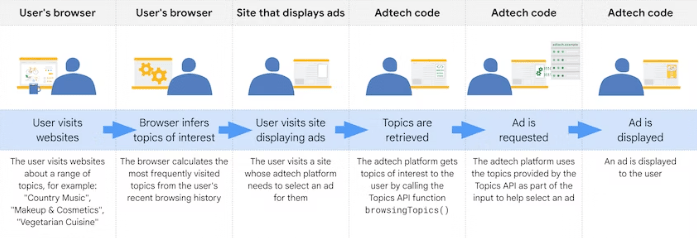
Although it is still not released to the public, all those marketers looking for Third-Party Data alternatives are already interested in the Google Topics API. To put it simply, it just categorizes the sites visited into separate categories. Now relevant ads are shown as per these sites visited.
For example, someone who is a visitor of sports sites may be shown ads for sports live-streaming services. All this will still be possible without having info on the specific sites being visited and the same being shared with the advertisers. Here, users will also have the option of choosing the topics they want to be associated with and the ones they prefer to keep private.
Read More: Google Privacy Sandbox: A Look at the Alternative to Third-Party Cookies
Universal Identifiers as an Alternative to Cookies
This is a unique User ID that allows various brands to identify users from various websites and across various devices. It works almost like Third-Party cookies and has a number of advantages: It allows tracking across devices, creates a smooth and seamless experience and also reduces data loss
Eliminates the probability of duplicate information, which results in sample sizes which are more accurate
Universal ID solutions may be created with the help of First-Party Data, which offer targeting as well as privacy at the same time.
Contextual Advertising
This is the process where ads are served on the basis of analysis of the keywords and phrases of the content of a web page. It is not dependent on personal data. However, sometimes data like the details of the device and time of browsing etc., are passed on by the publishers.
Advertisers take the help of machine learning to predict which pages can be targeted and at what time. It is found to be most effective when a certain publisher has highly themed content which may be used to attract several users with a specified interest.
Read More: What is Contextual Advertising? How Does it Work?
Data Clean Rooms or Data Pools
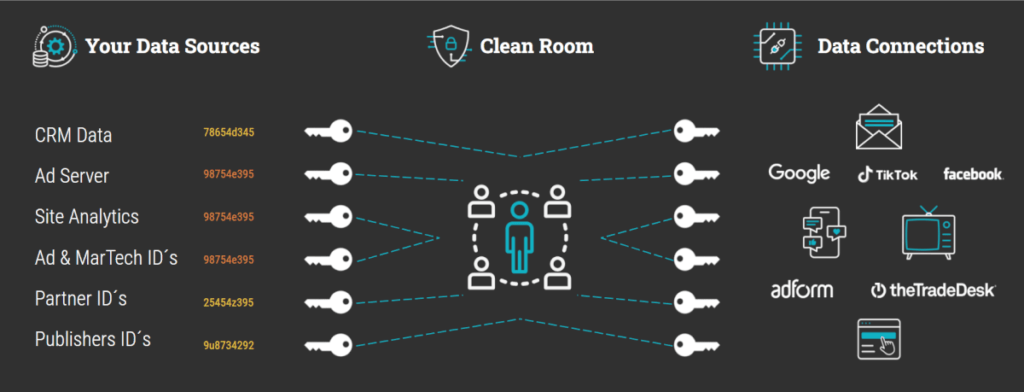
These are repositories for a huge amount of data. To make sure that users’ privacy is not at risk, these pools are not independent of either publishers or advertisers. What publishers can do, is upload or tally the first-party data from their side, and the advertisers can do the same.
This is how advertisers can gather insights about the audience from the publishers and prepare targeted ads accordingly. The only problem with this solution is the scale. There need to be millions of entries in this pool in order to be able to match the data of a specific user. Also, the publishers and the advertisers will need to coordinate properly to get the system working.
User Identity Graphs
This is a system that combines Personally Identifiable information, i.e., PII like email ids, with non-PIIs like publisher IDs and First-Party cookies. The main advantage of Identity Graphs is that they allow cross-platform and cross-channel tracking and targeting.
The disadvantage, on the other hand, is that they are actually quite difficult to create and deploy without facing the risk of compromising privacy accidentally. The only solution is that the vendor to be used in this case should be a trusted one who is also a specialist in this area.
Digital Fingerprinting
This is a process which is used to identify users by collecting bits and pieces of information about the device for creating a unique “Fingerprint”. The two categories of this method are known as Device Fingerprinting and Browser Fingerprinting.
As the user surfs the internet, the information gathered from the browser is used to create browser fingerprinting. In the same way, device fingerprinting is created from information gathered from third-party apps which the users have got installed on their devices. The information which gets recorded for Digital fingerprinting are:
- Plugins
- IP
- Browser
- Operating System
- Screen Size
- Time Zone
What is The Reason for Blocking Third-Party Cookies?
There are privacy concerns regarding third-party cookies collecting user data and passing it on to third parties. These cookies do not give the users control over the usage of their PII Or Personally Identifiable Information. Now, this has come to the notice of web browsers and regulators, who have decided to take action in this matter.
From 2018 onwards, rules and regulations have been set out by GDPR for explicitly gathering user consent for the purpose of targeted advertising across the European Union.
In the same way, the CCPA Regulations in the state of California are entitled to protect the data belonging to the users hailing from the state.
Their main purpose is to inform the users regarding the data being used and allow them to choose whom to entrust their data with. Browsers like Safari and Firefox have already blocked Third-Party cookies, and Chrome is also supposed to follow suit by 2024.
So automatically, the industry has been looking into alternatives to Third-Party Cookies.
What Will Happen When Third-Party Cookies are Blocked?
When online bidding happens, advertisers tend to bid 50% less if they are not able to identify the users. By the end of 2020, at least 30% of users were using a browser that blocked Third-Party Cookies.
The basic understanding is that the long-tail, small publishers are not able to collect and provide enough data to the advertisers. As a result, their ad inventories also do not become rich enough to push a successful ad campaign.
Now, this is where the Third-Party Cookies come into the picture. It is with the help of these Third-Party cookies that publishers get to access more user data for passing them on to the advertisers. As a result, their ad inventory also becomes extremely valuable.
Now, if all the major browsers stop supporting Third-Party Cookies, it will not be possible to set up frequency capping or audience targeting for as many as 99% of users. At the same time, targeting the cross-site audience will also become next to impossible.
The only way for these things to pan out is that there will be an upheaval of non-personalized ads all over the internet, and the effectiveness of the ad campaigns will decrease to a great extent. Here are the main reasons why the revenues will go down:
- The brands will be redirecting their advertising budgets to websites where they have their own systems of authorization. This way, they will be able to constantly collect and process user data.
- Purchase of media via models like CPC, i.e., Cost-Per-Click and CPA, i.e., Cost-Per-Action, will become even more popular. This is because they do not depend on either frequency or reach. The only problem is that these models are not as profitable for the publishers.
- Now until the systems of verification are reconstructed to function without third-party cookies, traffic fraud might increase to some extent. So, advertisers will also have less trust in the programmatic environment.
- Some of the advertisement budgets are bound to spill into mobile advertising on the Android platform considering the targeting possibilities haven’t been limited there yet. Apple, however, has already restricted tracking of users in iOS14.
In a Nutshell
So now that you are aware of the most popular alternatives of Third-Party Cookies in the market, it should be easier for you as a marketer to stop getting anxious and start the process of choosing a model that suits your needs the best.
It is important to remember that there is no one best solution that will suit everyone. You are required to weigh out the pros and cons and take an informed decision that will be for your benefit.
So, if you’d like to know more about how we can help publishers prepare for a future without 3rd party cookies, get started here with AdPushup.
FAQ
Now that Third-Party Cookies are being phased out, marketers are looking for various effective alternatives for these. They include:
– First-Party Cookies
– Digital Fingerprinting
– Contextual Advertising
– Universal Identifiers etc.
It has been announced by Google that by the end of 2023, Google will stop supporting Third-Party Cookies on the Chrome Browser.
Browsers like Safari and Firefox have already done that. Since Third-Party Cookies were posing a privacy threat to the data of the users causing data breaches and raising user concerns, it had been decided to phase them out.
Considering the rising concerns and data breaches happening due to Third-Party Cookies, it can be surmised that they are not the safest.

Shubham is a digital marketer with rich experience working in the advertisement technology industry. He has vast experience in the programmatic industry, driving business strategy and scaling functions including but not limited to growth and marketing, Operations, process optimization, and Sales.

